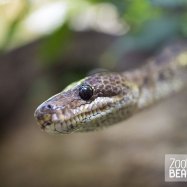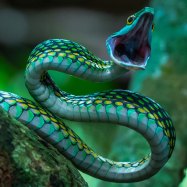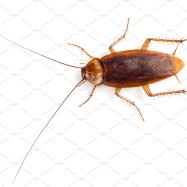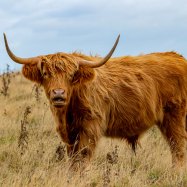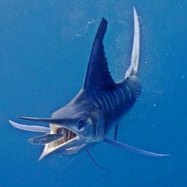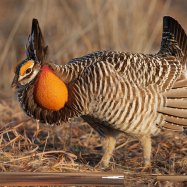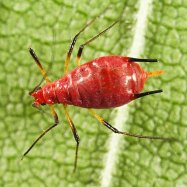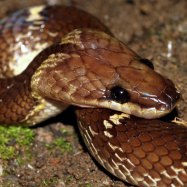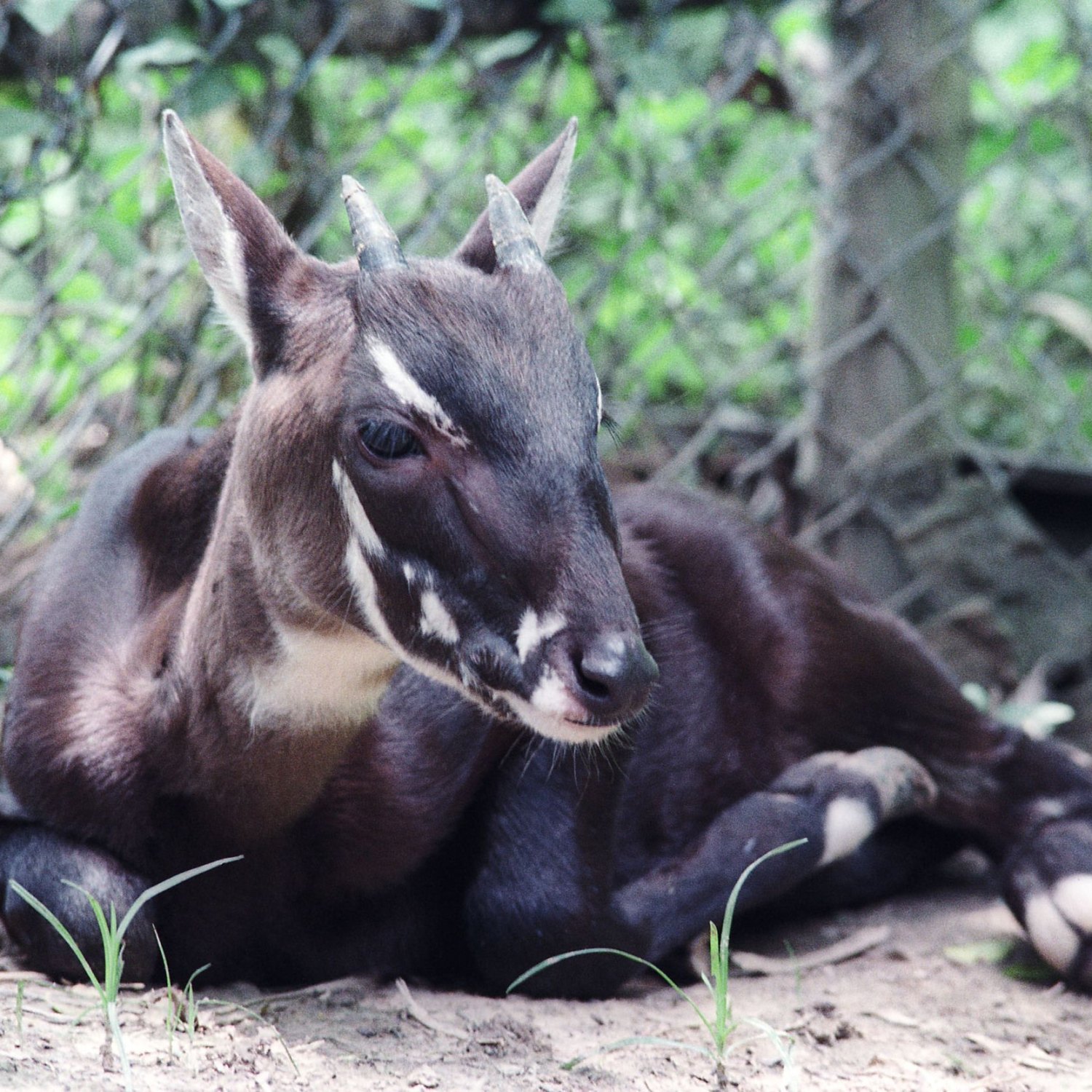
Saola
150-190 cm
The Saola, also known as the Asian unicorn, is a rare and elusive animal found in the temperate regions of Asia. With a body shape similar to a medium-sized bovine, this unique creature can grow up to 150-190 cm in length. Belonging to the Bovidae family, the Saola is a popular animal among wildlife enthusiasts. However, due to habitat loss and hunting, they are considered critically endangered. #Saola #AsianUnicorn #WildlifeConservation.
Animal Details Summary:
Common Name: Saola
Kingdom: Animalia
Habitat: Evergreen and mixed evergreen-forests
The Enigmatic Saola: A Rare Beauty of the Annamite Mountains
Deep in the dense evergreen forests of the Annamite Mountain Range, hidden from the prying eyes of civilization, roams a mysterious creature - the Saola. Also known as the "Asian Unicorn", this elusive species has captured the fascination of scientists and conservationists worldwide due to its unique appearance, reclusive nature, and critically endangered status.The Saola, scientifically known as Pseudoryx nghetinhensis, is a mammal belonging to the Kingdom Animalia, Phylum Chordata, and Class Mammalia. It is part of the Artiodactyla order, which includes even-toed ungulates like deer, cattle, and goats Saola. The Saola's closest living relative is the gaur, a wild ox native to South and Southeast Asia. However, upon closer inspection, the Saola's physical features are quite distinct from its relatives, making it a truly extraordinary animal.
The Saola's most striking feature is its two long, straight horns, which can grow up to 50 cm in length. These horns are different from those of other bovids, as they are sharp and pointed, unlike the curved horns of cattle and bison. Its body is compact and medium-sized, measuring between 150-190 cm in length and weighing up to 90 kg. The Saola has a light brown to dark brown coat, with white markings on its face and contrasting black and white stripes on its legs. Its unique coloration allows it to blend in seamlessly with its forest habitat, making it even harder to spot.
The Saola is an herbivorous animal and feeds mainly on leaves, buds, and stems of plants. This feeding method, along with its solitary and shy nature, makes it difficult to study in the wild Sehuencas Water Frog. Little is known about its behavior, social structure, and reproduction, as most of the information gathered is from sightings of the animal in the wild or through camera traps.
The Saola's geographical distribution is limited to the densely forested areas of the Central Annamite Mountain Range, straddling the Laos-Vietnam border. Specifically, they can be found in the Vu Quang, Nakai-Nam Theun National Park, and Phong Nha-Ke Bang regions in Vietnam, and in the Nakai-Nam Theun and Nam Et-Phou Louey National Parks in Laos. The Saola's habitat ranges from subtropical to temperate forests, where they can be found in elevations of 400 to 1,500 meters above sea level. They are most commonly found in areas with evergreen and mixed evergreen forests, where they can graze on a variety of plants.
The Saola's country of origin is Vietnam and Laos, where they have been a part of the local culture and folklore for centuries. However, the first scientific discovery of the Saola was in 1992, and the species was only formally described in 1993. Since then, there have been very few confirmed sightings of the animal, making it one of the most elusive and rarest species on our planet.
The Saola's critically endangered status is mainly due to habitat loss and fragmentation, caused by human activities such as logging, road construction, and agricultural expansion. Their solitary and elusive nature also makes them vulnerable to poaching, as their horns are highly valued in traditional medicine and for decorative purposes. The illegal trade of Saola parts makes the species a prized target for poachers, putting them at a high risk of extinction.
Efforts to conserve the Saola began in the 1990s, with little success due to the lack of information about the species. In 2010, the Saola population was estimated to be between 70 to 100 individuals, making it one of the most critically endangered large mammals in the world. In 2016, the IUCN Red List of Threatened Species declared the Saola to be critically endangered, listing it as one of the top 100 most threatened species in the world.
Since then, various conservation organizations and government agencies in Vietnam and Laos have come together to protect this enigmatic animal. In 2013, the Saola Working Group was formed, bringing together conservationists, scientists, and local communities to develop and implement conservation strategies to save the species. The Saola Nature Reserve was also established, covering an area of over 200,000 hectares, to protect the Saola's habitat.
One of the major obstacles to Saola conservation is the lack of information about the species. Researchers and conservationists are using various methods to study the Saola's behavior and population, including camera traps, radio collars, and wildlife surveys. In 2018, the first-ever camera trap footage of a Saola in the wild was captured, providing valuable information on its behavior and habitat.
Despite being extremely elusive and critically endangered, the Saola has captured the hearts and minds of people worldwide. Its mysterious appearance and reclusive nature have made it a symbol of conservation and hope for the biodiversity of the Annamite Mountains. The efforts to save this unique species not only benefit the Saola but also contribute to the protection of the entire ecosystem of the Annamite Mountain Range.
In conclusion, the Saola is a remarkable animal, both in appearance and behavior. Its existence is a testament to the incredible biodiversity of our planet, and its critically endangered status serves as a reminder of the impact of human activities on our natural world. As we continue to learn more about this rare and elusive species, it is important to support conservation efforts and raise awareness about the Saola's plight. Only with a collective effort, can we ensure the survival of this mysterious and magnificent creature in the wild for generations to come.

Saola
Animal Details Saola - Scientific Name: Pseudoryx nghetinhensis
- Category: Animals S
- Scientific Name: Pseudoryx nghetinhensis
- Common Name: Saola
- Kingdom: Animalia
- Phylum: Chordata
- Class: Mammalia
- Order: Artiodactyla
- Family: Bovidae
- Habitat: Evergreen and mixed evergreen-forests
- Feeding Method: Herbivorous
- Geographical Distribution: Central Annamite Mountain Range in Vietnam and Laos
- Country of Origin: Vietnam, Laos
- Location: Temperate
- Animal Coloration: Light brown to dark brown
- Body Shape: Medium-sized bovine
- Length: 150-190 cm
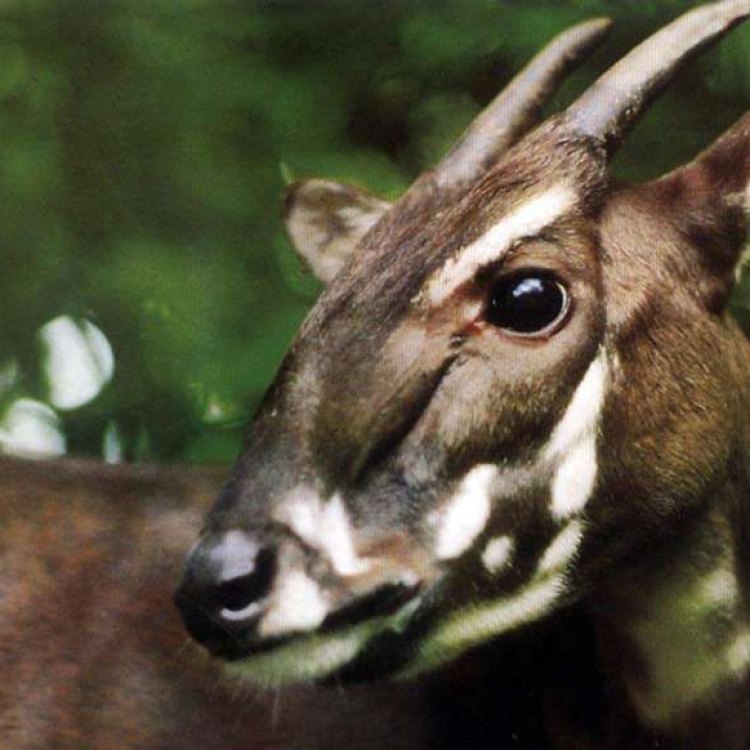
Saola
- Adult Size: Medium
- Average Lifespan: 10-15 years
- Reproduction: Sexual
- Reproductive Behavior: Polygamous
- Sound or Call: Unknown
- Migration Pattern: Non-migratory
- Social Groups: Solitary or small groups
- Behavior: Elusive and secretive
- Threats: Habitat loss, hunting
- Conservation Status: Critically Endangered
- Impact on Ecosystem: Unknown
- Human Use: None
- Distinctive Features: Long, straight horns; white markings on face
- Interesting Facts: 1. Saola was discovered by scientists in 1992. 2. It is one of the rarest mammals in the world. 3. Saola is often referred to as the 'Asian unicorn'. 4. They are difficult to study and little is known about their behavior. 5. Saola is a symbol of conservation in Vietnam.
- Predator: Unknown
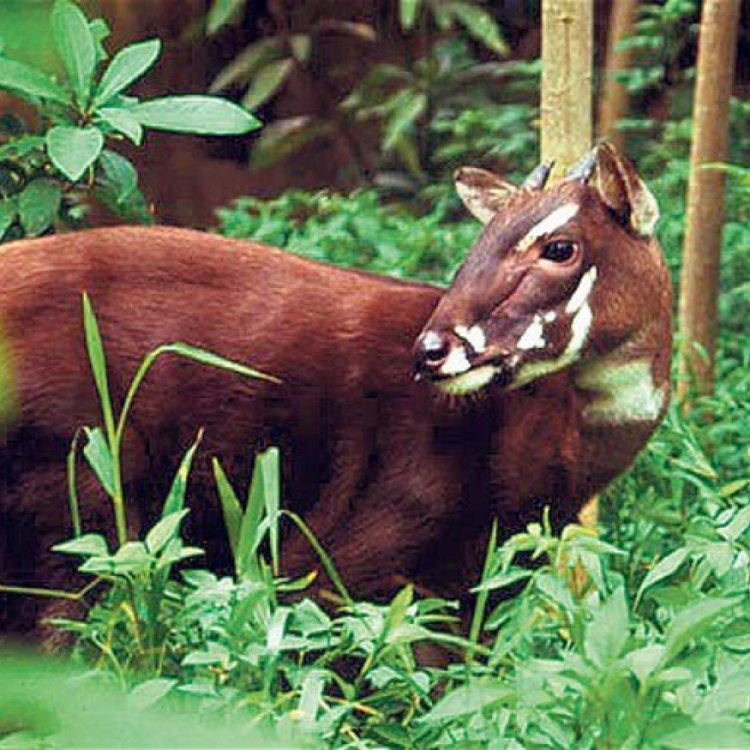
Pseudoryx nghetinhensis
A Precious and Enigmatic Creature: The Elusive World of Saola
Deep in the dense forests of Vietnam, Laos, and nearby countries, lives a creature that remains elusive and mysterious to most of us. This animal, known as Saola, is a critically endangered species that was only discovered by scientists in 1992. Despite its relatively recent discovery, Saola has already captured the hearts and minds of people around the world, thanks to its unique features and fascinating behavior.Saola belongs to the Bovidae family, which includes common animals like cows, goats, and antelopes PeaceOfAnimals.Com. However, this rare creature stands out with its distinctive features and enigmatic nature. In this article, we will delve into the world of Saola, exploring its physical traits, behavior, threats, and conservation status.
The Physical Characteristics of Saola
Saola, also known as the Asian unicorn, is a medium-sized animal that can grow up to 1.1 meters in height and weigh around 90 kilograms. It is slightly smaller than the average deer, making it one of the rarest and most elusive mammals in the world.One of the most distinctive features of Saola is its long, straight horns that can reach up to 50 centimeters in length. These horns are found in both male and female Saolas and are used for territorial defense and attracting mates. Another unique physical characteristic of Saola is the white markings on its face, which gives it a striking and exotic appearance.
Saola's overall appearance is similar to that of an antelope, with a reddish-brown coat and white patches on its face, throat, and belly Shantungosaurus. Its mane is darker and longer than its body fur, adding to its regal and majestic appearance. They also have a short tail, round ears, and slender, agile legs, enabling them to navigate through the dense forests with ease.
The Enigma of Saola's Behavior
While scientists have been able to gather some information about Saola's physical characteristics, their behavior remains largely a mystery. Due to their elusive and solitary nature, studying Saolas in their natural habitat is incredibly challenging. However, from what has been observed, these creatures are highly secretive and tend to avoid human contact.It is believed that Saolas are polygamous, with males competing for mates during the breeding season. However, their reproductive behavior and social structure are not fully understood due to the limited information available. Saolas are also known to be non-migratory, and they primarily reside in small groups or as solitary individuals.
Their elusive and solitary behavior makes it difficult for researchers to study them, ultimately leading to a lack of knowledge about their behavior. As a result, the impact of Saola on the ecosystem is still unknown, making it a crucial area for further research.
Threats to the Survival of Saola
Despite its elusive nature, Saola has faced numerous threats that have pushed it towards the brink of extinction. The primary threat to their survival is habitat loss due to human activities such as logging, agricultural expansion, and infrastructure development. The dense forests where Saola resides are being constantly cleared, leaving them with a shrinking habitat and limited resources.Moreover, Saola is hunted for its meat and horns, which are believed to have medicinal properties in traditional Chinese medicine. The demand for these products has led to illegal poaching and trade, further depleting their already small population. As a result, Saola has been classified as critically endangered by the International Union for Conservation of Nature (IUCN).
The exact population of Saola is difficult to determine, but it is estimated that there are only a few hundred individuals remaining in the wild. With such a small population and numerous threats, the future of Saola is uncertain and requires immediate conservation efforts.
The Efforts to Conserve Saola
In recent years, there has been a growing interest in conserving Saola, with several organizations and governments coming together to protect this enigmatic creature. In Vietnam, where Saolas are primarily found, the local government has declared them as a National Priority Species and established protected areas where they can thrive without human interference.International organizations, such as the World Wildlife Fund (WWF), have also been actively involved in Saola conservation efforts. They have supported local communities in developing sustainable livelihoods, reducing human-wildlife conflicts, and advocating for stronger laws and enforcement against illegal hunting and trade of Saola.
However, conservation of Saola is not without its challenges. The limited available information about their behavior and ecology makes it difficult to develop effective conservation strategies. Moreover, the remote and inaccessible areas where Saolas live make it challenging to monitor and protect them effectively.
The Symbol of Conservation in Vietnam
Beyond its physical features and behavior, Saola holds a significant cultural and symbolic value in Vietnam. It is considered a symbol of conservation and environmentalism, with many people viewing it as a mystical and sacred creature.In Vietnamese folklore, Saola is often associated with the legend of the 'Chim Lac' or the lost bird. It is said that Saola and other rare animals were sent to earth by a deity to remind humans of the importance of protecting the environment and all its creatures. This legend has been passed down through generations and serves as a reminder of the crucial role Saola plays in promoting conservation awareness.
The Future of Saola
Saola remains one of the most mysterious and elusive creatures in the world, and its future is uncertain. While efforts are being made to conserve them, the challenges and threats they face continue to persist. With a dwindling population and limited information about their behavior, there is a pressing need for further research and conservation efforts.As we continue to learn more about Saola and its role in the ecosystem, it is vital to raise awareness about their plight and the importance of preserving their habitat. Whether we call it the Asian unicorn or the lost bird, Saola's rarity and enigmatic nature make it a precious and unique creature that deserves our attention and protection. Let us all work together to ensure that this majestic and elusive animal continues to roam the forests for generations to come.
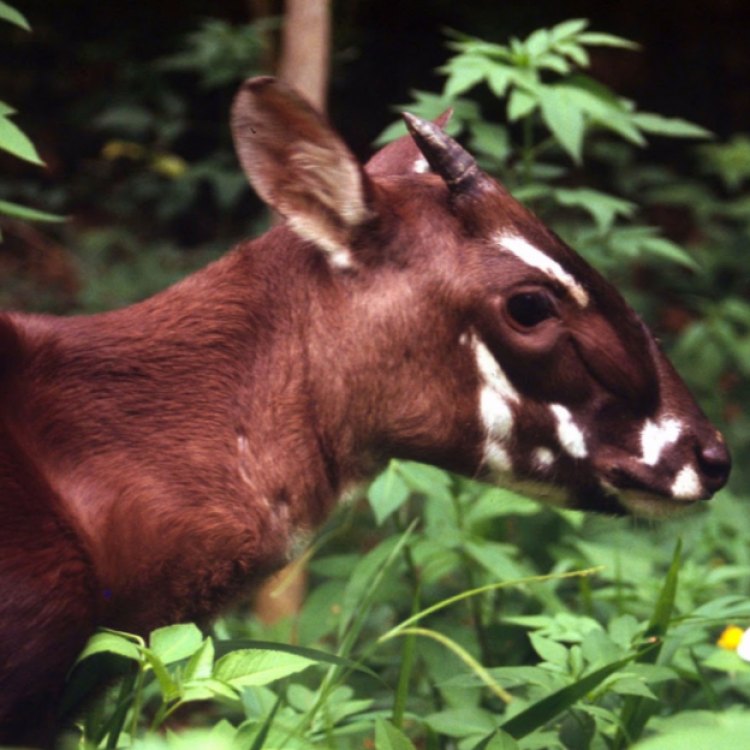
The Enigmatic Saola: A Rare Beauty of the Annamite Mountains
Disclaimer: The content provided is for informational purposes only. We cannot guarantee the accuracy of the information on this page 100%. All information provided here may change without prior notice.

